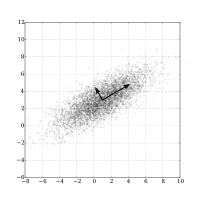
Photo from wikipedia
A major task of climate science are reliable projections of climate change for the future. To enable more solid statements and to decrease the range of uncertainty, global general circulation… Click to show full abstract
A major task of climate science are reliable projections of climate change for the future. To enable more solid statements and to decrease the range of uncertainty, global general circulation models and regional climate models are evaluated based on a 2 × 2 contingency table approach to generate model weights. These weights are compared among different methodologies and their impact on probabilistic projections of temperature and precipitation changes is investigated. Simulated seasonal precipitation and temperature for both 50-year trends and climatological means are assessed at two spatial scales: in seven study regions around the globe and in eight sub-regions of the Mediterranean area. Overall, 24 models of phase 3 and 38 models of phase 5 of the Coupled Model Intercomparison Project altogether 159 transient simulations of precipitation and 119 of temperature from four emissions scenarios are evaluated against the ERA-20C reanalysis over the 20th century. The results show high conformity with previous model evaluation studies. The metrics reveal that mean of precipitation and both temperature mean and trend agree well with the reference dataset and indicate improvement for the more recent ensemble mean, especially for temperature. The method is highly transferrable to a variety of further applications in climate science. Overall, there are regional differences of simulation quality, however, these are less pronounced than those between the results for 50-year mean and trend. The trend results are suitable for assigning weighting factors to climate models. Yet, the implications for probabilistic climate projections is strictly dependent on the region and season.
Journal Title: Climate Dynamics
Year Published: 2017
Link to full text (if available)
Share on Social Media: Sign Up to like & get
recommendations!